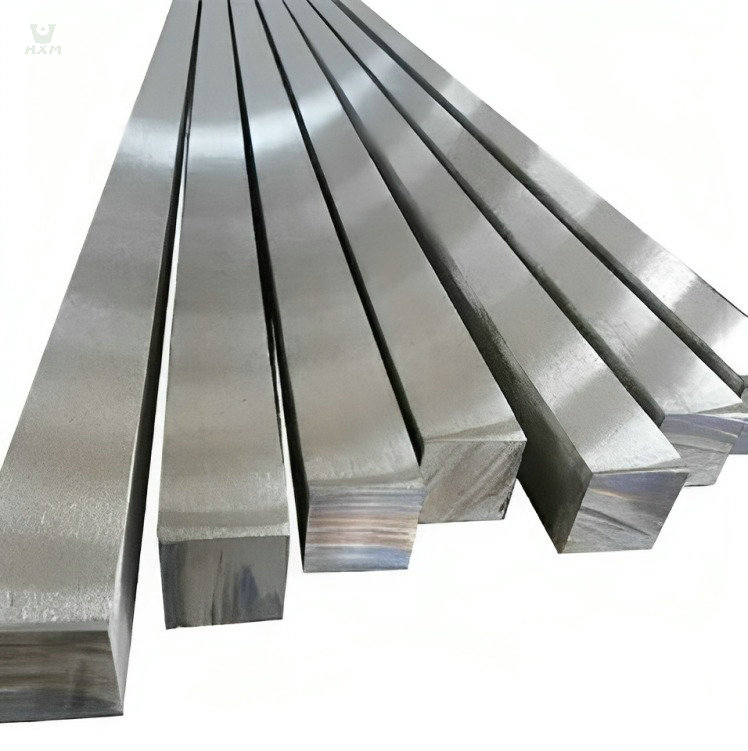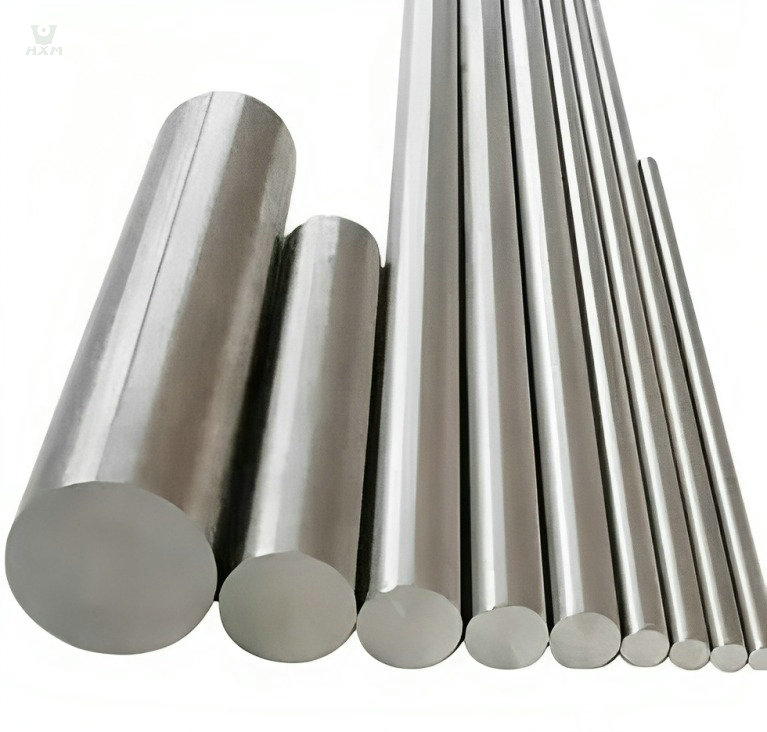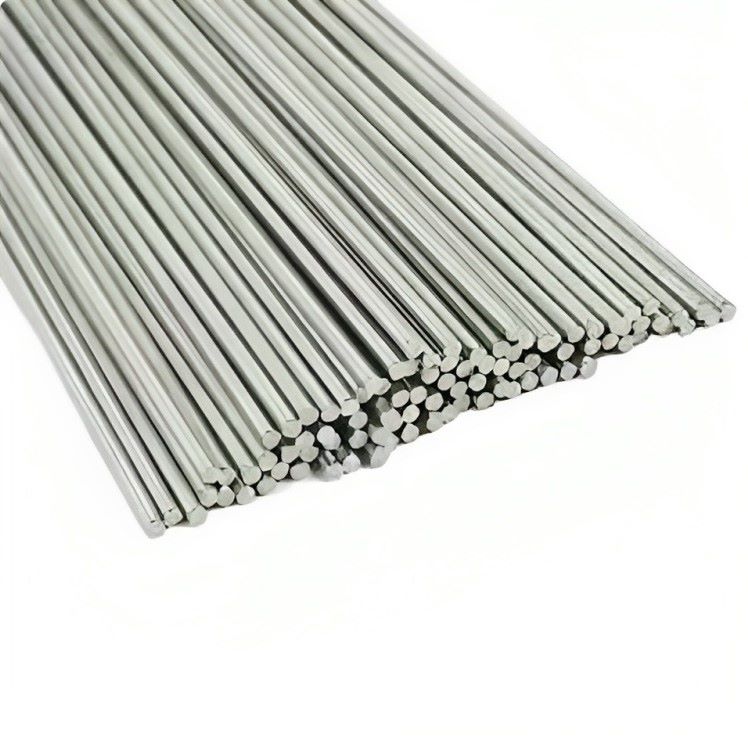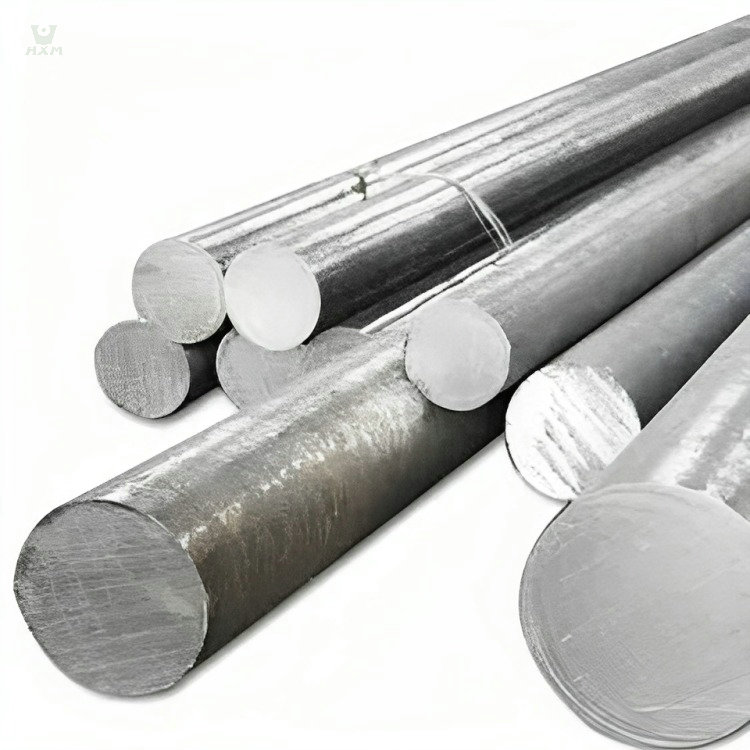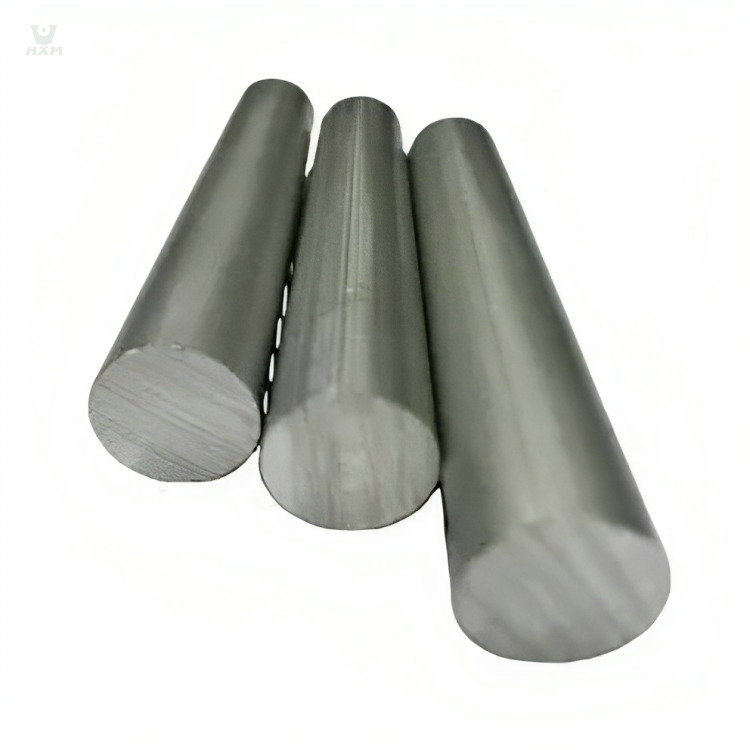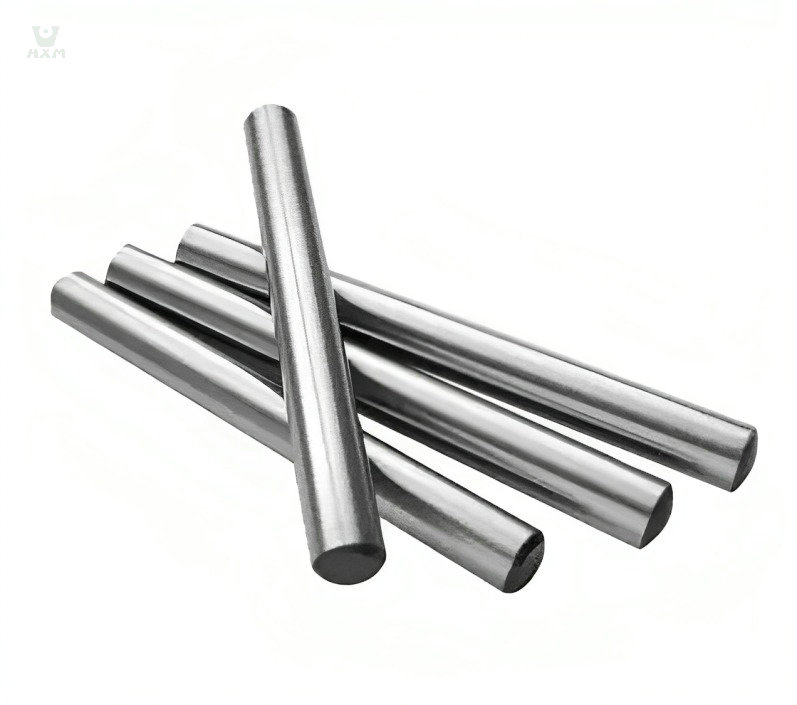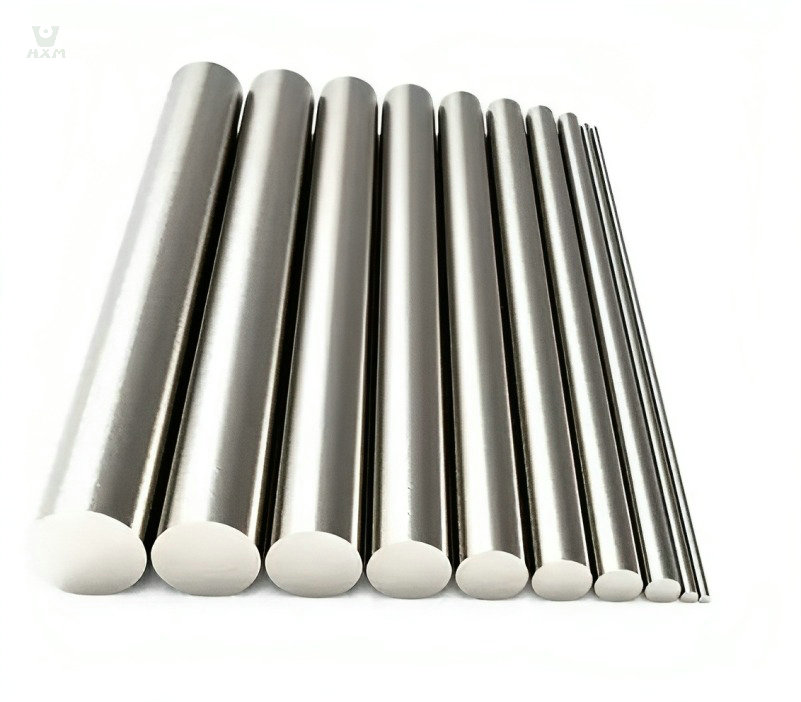
416 Stainless Steel Bar Supplier In China
Diameter: 3mm-480mm, 1/8″ to 2 1/4″
Standard: GB1220, ASTM A484/484M, EN 10060/ DIN 1013 ASTM A276, EN 10278, DIN 671
Shape: round, flat, square, angle, hexagonal
Finish: Black, NO.1, mill finish, cold draw, H9, H11
product description of 416 stainless steel bar
416 stainless steel is a remarkable free-machining variant of martensitic stainless steel, distinguished by the introduction of sulphur or selenium. This alloy possesses the unique ability to be strengthened through heat treatment, elevating its strength and hardness levels significantly.
What sets 416 stainless steel apart is its exceptional machinability, surpassing that of austenitic grades. The material’s improved machinability, coupled with its capacity for heat-induced hardening, makes it an excellent choice for precision components and demanding applications.
Applications span a spectrum of industries, from cutlery and kitchen utensils that demand precision and sharpness to critical components like steam and gas turbine blades. Furthermore, 416 stainless steel finds utility in fasteners and bushings, where both durability and machining ease are paramount.
While this stainless steel excels in machining, it’s important to note that its corrosion resistance is somewhat lower compared to austenitic counterparts. For industries prioritizing precision and machinability, 416 stainless steel is the choice of the discerning. Discover more about the versatility and performance of 416 stainless steel bar in various applications.
specification of 416 stainless steel bar
Chemical Composition Of 416 Stainless Steel Bar
| Element | Composition Range (% by Weight) |
|---|---|
| Carbon (C) | 0.15 max |
| Chromium (Cr) | 12.0 – 14.0 |
| Manganese (Mn) | 1.25 max |
| Phosphorus (P) | 0.06 max |
| Sulfur (S) | 0.15-0.35 |
| Silicon (Si) | 1.00 max |
physical property Of 416 Stainless Steel Bar
| Property | Value |
|---|---|
| Density | 7.8 g/cm³ (0.28 lb/in³) |
| Melting Point | 1482°C (2700°F) |
| Electrical Resistivity | 670 nΩ·m (micro-ohm meter) |
| Thermal Conductivity | 24.2 W/m·K (at 100°C) |
| Specific Heat Capacity | 0.502 J/g·K (at 20°C) |
| Coefficient of Linear Thermal Expansion | 10.3 x 10⁻⁶/°C (20-100°C) |
| Magnetic Susceptibility | Yes (Martensitic structure) |
| Modulus of Elasticity (Young’s Modulus) | 193 GPa (28 x 10⁶ psi) |
mechanical property Of 416 SS Bar
| Property | Value |
|---|---|
| Tensile Strength (Ultimate) | 517 MPa (75,000 psi) |
| Tensile Strength (Yield) | 345 MPa (50,000 psi) |
| Elongation at Break | 25% (in 50 mm) |
| Modulus of Elasticity | 193 GPa (28 x 10^6 psi) |
| Poisson’s Ratio | 0.29 |
| Hardness (Brinell, HB) | 187 (annealed condition) |
features of 430 stainless steel bar
416 stainless steel stands as a remarkable example of free-machining stainless steel, a term coined to describe an alloy’s exceptional ease of machining. This specific variation of stainless steel belongs to the martensitic category and is distinguished by the deliberate introduction of elements such as sulfur or selenium into its composition.
The introduction of sulfur or selenium serves a pivotal role in the enhancement of machining properties. This deliberate alloy modification, which distinguishes 416 stainless steel from its non-free machining counterparts, has far-reaching implications for its utility in various industrial applications.
- The Role of Sulfur or Selenium:
Sulfur or selenium acts as a so-called “sulfide former” in the steel’s composition. When machining operations are conducted, these elements combine with manganese to create manganese sulfide inclusions within the material. These inclusions serve as effective chip breakers during machining processes. By facilitating the formation of shorter and more manageable chips, they significantly reduce the risk of tool wear, improve surface finish, and enhance the overall machining efficiency. - Enhanced Machinability:
The presence of these sulfide inclusions allows for smoother, more efficient cutting, turning, and milling. It diminishes the power requirements for machining and mitigates the generation of excess heat, leading to extended tool life. Consequently, 416 stainless steel is celebrated as an ideal choice for components and parts that demand precision machining and intricate geometries.
In summary, the free-machining variation of 416 stainless steel is a meticulously engineered alloy, benefiting from the addition of sulfur or selenium. This alloy refinement results in the formation of manganese sulfide inclusions, ultimately enhancing its machinability, making it a preferred material for intricate and precision machining applications across various industries.
416 stainless steel, a member of the martensitic stainless steel family, possesses a distinctive property known as being “heat-treatable.” This property signifies the material’s capacity to undergo controlled heat treatment processes, resulting in the augmentation of both its mechanical strength and hardness.
Heat Treatment as a Transformative Process: Heat treatment is a methodical process that subjects the material to carefully controlled heating and cooling cycles. In the case of 416 stainless steel, heat treatment enables the manipulation of its microstructure, thereby engendering improved mechanical properties. This transformation process is indispensable for tailoring the material to meet specific performance criteria in various industrial applications.
Strengthening Through Precise Heat Control: One of the most remarkable outcomes of heat treatment is the elevation of mechanical strength. By subjecting 416 stainless steel to precise temperature conditions and durations during the heat treatment, the crystalline structure undergoes significant changes. These alterations engender the formation of a harder martensitic microstructure, leading to an increase in the material’s tensile and yield strength.
Enhanced Hardness: In conjunction with elevated strength levels, heat treatment also brings about heightened hardness in 416 stainless steel. This property is particularly advantageous in applications where resistance to wear, abrasion, and deformation is paramount. The hardened material exhibits superior durability and can withstand challenging environments and mechanical stresses.
Customized Performance: The ability to heat-treat 416 stainless steel offers the advantage of customization. Manufacturers and engineers can fine-tune the material’s properties to precisely match the requirements of diverse applications. This flexibility in tailoring mechanical characteristics, including strength and hardness, ensures that 416 stainless steel is a versatile choice for a wide range of industries and uses.
In summary, the heat-treatable nature of 416 stainless steel provides the means for deliberate enhancement of its mechanical properties. Through controlled heat treatment processes, the material can achieve heightened strength and hardness levels, thus rendering it suitable for applications demanding superior mechanical performance and resistance to wear and deformation.
416 stainless steel stands out as a distinguished example of stainless steel renowned for its extraordinary machinability. This property, often referred to as the “stainless steel king of machinability,” signifies the material’s exceptional suitability for various machining processes, setting it apart from austenitic grades of stainless steel.
Machinability Defined: Machinability is a comprehensive measure of how effectively a material can be cut, shaped, and processed through machining operations such as turning, milling, drilling, and grinding. It encompasses multiple factors, including ease of chip formation, tool wear, surface finish, and power consumption.
The Role of Sulfur: What distinguishes 416 stainless steel and contributes significantly to its superior machinability is the introduction of sulfur as an alloying element. The presence of sulfur acts as a “sulfide former” within the material. During machining operations, it combines with manganese to create manganese sulfide inclusions.
Chip Formation and Tool Life: These manganese sulfide inclusions serve as effective chip breakers. Their formation during machining results in the generation of short, manageable chips. The presence of these inclusions minimizes chip-tool contact and reduces the risk of excessive tool wear. It also promotes improved surface finish and greater machining efficiency.
Reduced Power Consumption: The formation of shorter and more controllable chips in 416 stainless steel has a direct impact on power consumption during machining. The reduction in cutting forces and heat generation leads to lower power requirements for machining operations. This, in turn, enhances the efficiency of machining processes and prolongs the life of cutting tools.
Ideal for Precision Components: The exceptional machinability of 416 stainless steel makes it an ideal choice for applications demanding precision machining, intricate geometries, and tight tolerances. Industries that require components with finely detailed features and complex designs benefit significantly from this material’s ease of machining.
In summary, the superior machinability of 416 stainless steel, often attributed to the presence of sulfur and the formation of manganese sulfide inclusions, distinguishes it as the “stainless steel king of machinability.” This remarkable property facilitates efficient machining processes, reduces tool wear, and ensures the creation of precision components for a wide range of industrial applications.
The extraordinary machinability of 416 stainless steel is a distinctive feature attributed to the deliberate introduction of sulfur into its composition. This sulfur content plays a pivotal role in forming manganese sulfide inclusions, which in turn significantly enhance the material’s machinability. The synergy of these elements allows 416 stainless steel to excel in various machining processes.
Sulfur as a Machining Enhancer: Sulfur is strategically included as an alloying element in 416 stainless steel to serve as a “sulfide former.” During machining operations, sulfur interacts with manganese present in the alloy. This interaction gives rise to the creation of manganese sulfide inclusions within the steel matrix. These inclusions have a profound impact on the material’s machinability.
The Role of Manganese Sulfide Inclusions: Manganese sulfide inclusions function as highly effective chip breakers during machining. As the machining tool engages with the material, the presence of these inclusions leads to the controlled formation of short, easily manageable chips. This controlled chip formation significantly reduces the risk of tool wear, chip-tool contact, and the associated friction and heat generation.
Enhanced Surface Finish and Tool Life: The formation of manageable chips not only promotes superior surface finish but also extends the life of cutting tools. Reduced tool wear results in longer tool life and less frequent tool replacement, contributing to cost savings and efficiency in machining processes.
Efficient Machining and Reduced Power Consumption: The impact of manganese sulfide inclusions goes beyond tool life and surface finish. It also leads to lower power consumption during machining operations. The reduction in cutting forces and heat generation translates to reduced power requirements for machining, making the process more efficient.
Ideal for Precision Components: The presence of sulfur and the formation of manganese sulfide inclusions make 416 stainless steel an ideal choice for applications that demand precision machining, intricate geometries, and tight tolerances. This is particularly advantageous in industries where components with finely detailed features are required.
In summary, the unique sulfur content in 416 stainless steel is the key factor behind its exceptional machinability. The formation of manganese sulfide inclusions due to sulfur’s presence greatly enhances chip control, tool life, and machining efficiency. This property is a defining characteristic of 416 stainless steel, making it an invaluable material for applications that necessitate precision machining and intricate components.
416 stainless steel exhibits magnetic properties due to its martensitic microstructure, and this characteristic plays a significant role in shaping its performance attributes.
Magnetic Response and Machinability: The magnetic nature of 416 stainless steel contributes to its outstanding machinability. The material’s magnetic response facilitates efficient chip control during machining processes. This is particularly advantageous because it results in the formation of shorter, more manageable chips. The reduced chip-tool contact and lower friction during machining reduce the risk of tool wear, enhancing the overall efficiency of machining operations.
Magnetic Behavior and Wear Resistance: The material’s magnetic properties are also closely linked to its exceptional wear resistance. In applications where resistance to abrasion and wear is critical, the magnetic behavior of 416 stainless steel is an advantage. This characteristic ensures that components made from this material can withstand the forces and friction that often lead to wear in non-magnetic materials.
Application Suitability and Magnetic Properties: The magnetic properties of 416 stainless steel make it particularly suitable for specific applications where these characteristics are valued. Components that require precision machining, high wear resistance, and the ability to withstand abrasive conditions benefit from the magnetic response of this material. These include applications in the automotive industry, where the need for precision components and durability is paramount.
Magnetic Stainless Steel Versatility: While magnetic behavior is advantageous for certain applications, it’s important to note that this property is just one facet of 416 stainless steel’s overall versatility. It combines magnetic properties with its unique sulfur content, heat-treatable nature, and superior machinability, offering engineers and manufacturers a material well-suited for a broad range of demanding applications.
In summary, the magnetic properties of 416 stainless steel, arising from its martensitic microstructure, significantly impact its machinability, wear resistance, and suitability for specific applications. These properties make it a preferred choice for applications where precision machining, resistance to wear, and the ability to withstand abrasive conditions are crucial.
416 stainless steel is prized for its remarkable wear resistance, a property that renders it exceptionally well-suited for a range of challenging applications, including machine parts, structural components, and marine hardware.
The Nature of Wear Resistance: Wear resistance refers to a material’s ability to withstand abrasion, erosion, and friction-induced surface deterioration. It is a crucial property for components subjected to repeated contact with other materials or harsh environmental conditions.
Microstructure and Wear Resistance: The wear resistance of 416 stainless steel can be attributed to its unique martensitic microstructure, which is characterized by a hardened, crystalline lattice. This microstructure offers the material a robust and durable surface, capable of withstanding the abrasive forces encountered in demanding applications.
Machining and Formability: While 416 stainless steel’s superior machinability is well-documented, its wear resistance makes it particularly well-suited for machine parts that experience continuous contact and friction. The material’s ability to maintain its integrity and hardness under these conditions ensures longevity and optimal performance.
Structural Components and Marine Hardware: Structural components in various industries, such as construction and aerospace, rely on materials that can endure substantial stress and wear. 416 stainless steel’s wear-resistant nature makes it an excellent choice for these applications, providing durability and longevity.
Marine hardware, exposed to the harsh and corrosive conditions of seawater, benefits from the material’s resistance to wear. Whether used for fasteners, shafts, or other critical components, 416 stainless steel remains robust in marine environments, contributing to the overall reliability and safety of marine structures.
In summary, the wear resistance of 416 stainless steel is a vital property that arises from its unique microstructure. This characteristic makes it an outstanding choice for machine parts, structural components, and marine hardware, where abrasion and wear are prevalent challenges. Its durability, combined with its other properties, positions 416 stainless steel as a versatile and dependable material for demanding industrial applications.
416 stainless steel exhibits a nuanced corrosion resistance that, while not as robust as austenitic counterparts, offers notable protection in mildly corrosive environments. This property is a result of its unique martensitic microstructure and alloy composition.
Understanding Corrosion Resistance: Corrosion resistance is a material’s ability to withstand the deteriorating effects of chemical reactions, such as oxidation and rusting, when exposed to corrosive substances or environments. In the case of 416 stainless steel, the balance between corrosion resistance and other properties makes it suitable for specific applications.
Martensitic Microstructure and Corrosion: The martensitic microstructure of 416 stainless steel, which contributes to its excellent wear resistance, also plays a role in its corrosion resistance. The hardened surface of the material acts as a protective barrier against certain corrosive agents.
Mildly Corrosive Environments: 416 stainless steel’s corrosion resistance is particularly effective in mildly corrosive environments. These are settings where exposure to chemicals, moisture, or other corrosive factors is limited or occasional. For such conditions, this material provides ample protection against the onset of corrosion and deterioration.
Applications in Context: The suitability of 416 stainless steel in mildly corrosive environments is advantageous in industries where wear resistance, machinability, and structural integrity are of primary concern. It finds utility in components that may encounter sporadic exposure to corrosive agents but still require durability.
Corrosion Resistance Versus Other Properties: It’s important to note that the corrosion resistance of 416 stainless steel is balanced with its remarkable wear resistance, machinability, and heat-treatable nature. While it may not rival austenitic stainless steel in terms of corrosion resistance, its combination of properties makes it a versatile choice for applications where the benefits of its other characteristics outweigh the lower corrosion resistance.
In summary, 416 stainless steel offers a nuanced corrosion resistance that is effective in mildly corrosive environments. Its unique martensitic microstructure and alloy composition create a material that balances corrosion resistance with other desirable properties, making it a valuable choice for applications where strength, machinability, and wear resistance are paramount, even in the presence of occasional exposure to corrosive elements.
416 stainless steel is celebrated for its non-seizing and non-galling properties, which serve as crucial attributes in applications where friction-related issues can be detrimental. These properties are rooted in the material’s unique composition and microstructure.
Understanding Non-Seizing and Non-Galling: Non-seizing and non-galling properties refer to a material’s resistance to two common challenges: seizing, where materials bind together due to friction, and galling, which involves the transfer of material from one surface to another during friction. These issues can result in equipment failure, damage, and compromised performance.
Microstructure and Composition: The martensitic microstructure of 416 stainless steel, characterized by its hardened lattice, plays a pivotal role in the material’s non-seizing and non-galling properties. This microstructure, combined with the presence of sulfur and other alloying elements, creates a surface that is less prone to adhesion and friction-induced wear.
Friction Mitigation: In applications where components experience sliding, rotating, or reciprocal motion, the non-seizing and non-galling properties of 416 stainless steel come into play. These properties reduce the likelihood of parts sticking or binding together during operation, which can be particularly problematic in machinery, equipment, and mechanisms.
Prevention of Wear and Damage: By mitigating friction-related challenges, 416 stainless steel minimizes the risk of surface wear, scoring, and material transfer between components. This not only prolongs the life of the parts but also ensures consistent and reliable performance over time.
Applications in Context: Non-seizing and non-galling properties are especially valuable in industries where components frequently interact, such as automotive, aerospace, and manufacturing. The reduced risk of friction-related issues translates to reduced maintenance, longer equipment life, and enhanced operational safety.
In summary, the non-seizing and non-galling properties of 416 stainless steel are underpinned by its martensitic microstructure and alloy composition. These properties play a pivotal role in reducing friction-related challenges, such as seizing and galling, and are particularly valuable in applications where the integrity and longevity of components are paramount.
application of 416 stainless steel bar
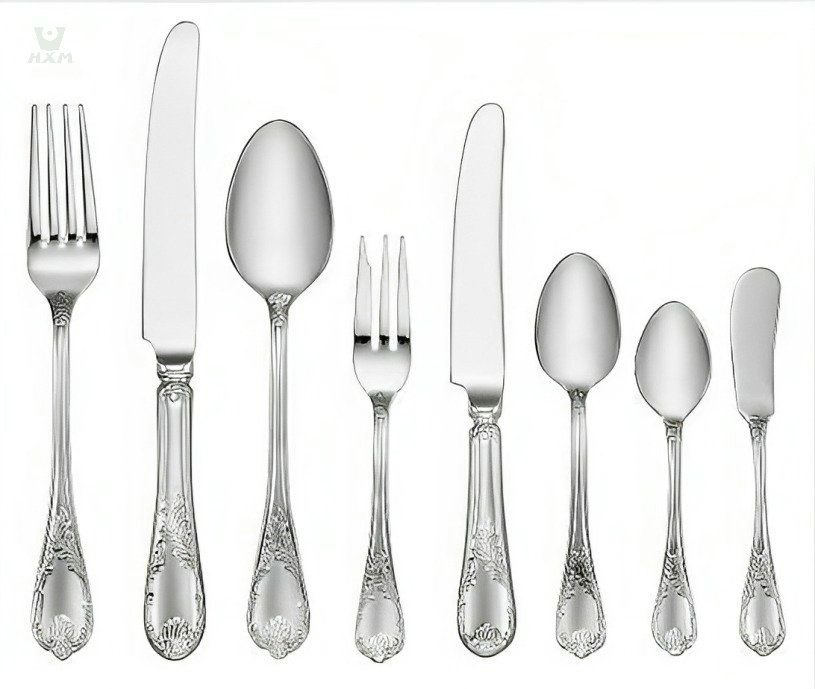
Cutlery and Kitchen Utensils
416 stainless steel, known for its strength and durability, finds extensive use in the fabrication of kitchen tools and utensils. Its wear resistance ensures longevity, making it an excellent choice for items such as knives, forks, and kitchen gadgets.
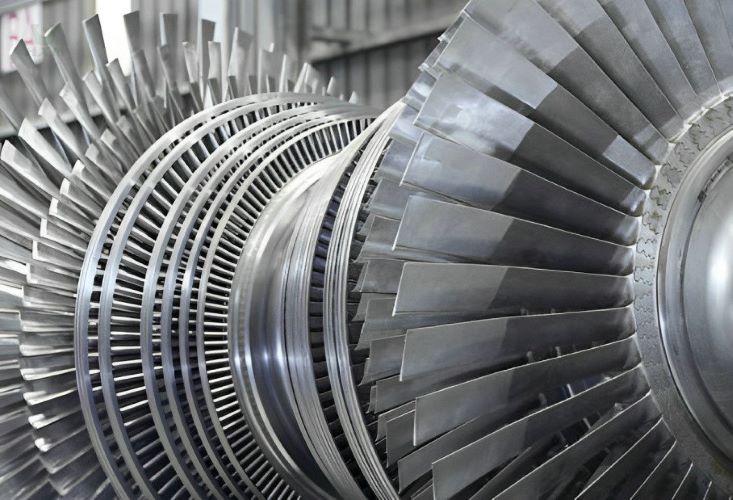
Steam and Gas Turbine Blades
The high heat resistance and wear durability of 416 stainless steel make it an ideal material for the construction of steam and gas turbine blades. These components operate in demanding conditions and require materials that can withstand high temperatures and mechanical stresses.
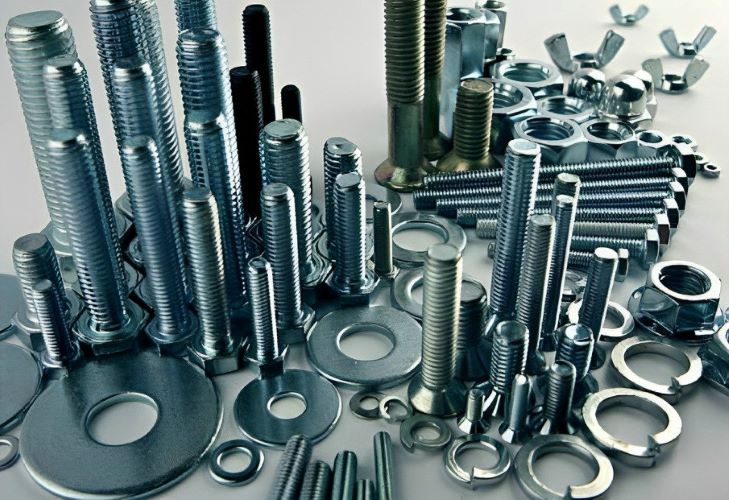
Common Bolts, Nuts, Gears, Valve Parts
The exceptional machinability and wear resistance of 416 stainless steel render it a preferred material for various mechanical components. It is commonly employed in the manufacturing of bolts, nuts, gears, and valve parts, where the need for precision machining and resistance to wear and corrosion is essential.
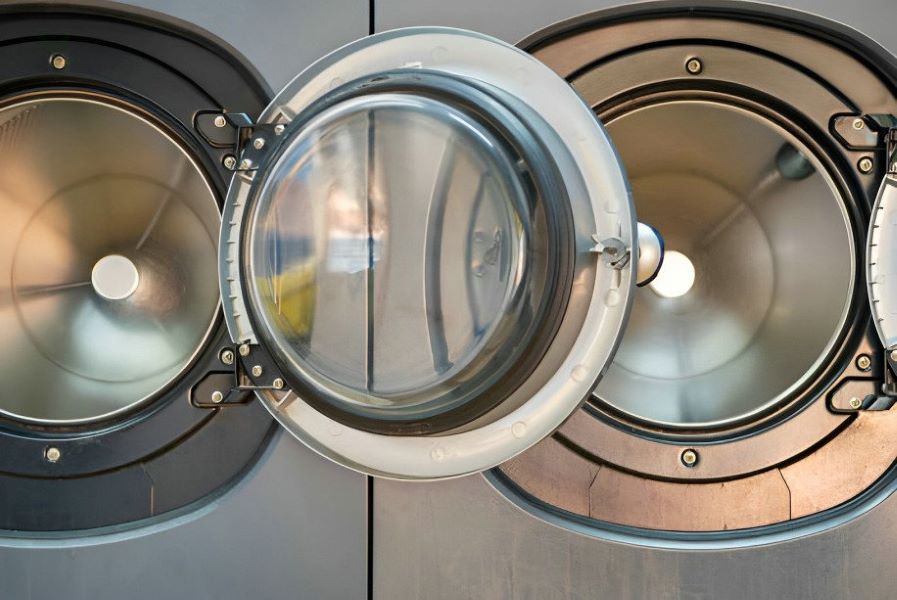
Washing Machine Components
In the realm of home appliances, 416 stainless steel is used in the production of washing machine components. Its resistance to wear and tear is particularly advantageous in this context, where mechanical parts must endure repeated cycles and exposure to moisture.
FAQ
Machinability is a critical aspect when selecting materials for manufacturing components, and the performance of 416 stainless steel is particularly noteworthy in this regard. To provide a comprehensive perspective, we will compare its machinability to that of other materials, emphasizing the supplier of 416 stainless steel bar.
Factors Influencing Machinability:
Alloy Composition: The alloy composition plays a significant role in determining the machinability of a material. In the case of 416 stainless steel, the presence of sulfur enhances its machinability. The additional sulfur content forms manganese sulfide inclusions, which serve as effective chip breakers during machining.
Microstructure: The unique martensitic microstructure of 416 stainless steel contributes to its machinability. The hardened lattice structure facilitates efficient chip control, reducing the risk of tool wear and surface imperfections during machining.
Comparative Analysis:
When comparing the machinability of 416 stainless steel to other materials, it’s important to note that 416 stainless steel is often recognized as the “stainless steel king of machinability.” The additional sulfur content is a key factor that sets it apart. This sulfur forms manganese sulfide inclusions, which, as mentioned, optimize chip formation and control.
This distinctive machinability attribute is particularly advantageous when contrasting 416 stainless steel with other stainless steel grades, such as austenitic stainless steels. While austenitic grades are known for their corrosion resistance, they often exhibit lower machinability.
Supplier of 416 Stainless Steel Bar:
For industries and manufacturers seeking to benefit from the superior machinability of 416 stainless steel, it is essential to engage with a reputable supplier of 416 stainless steel bar. A trusted supplier can provide consistent quality, precise specifications, and reliable access to this material, ensuring that it meets the exacting requirements of machining operations.
In summary, 416 stainless steel stands out as a material with exceptional machinability, notably in comparison to other stainless steel grades. Its machinability is attributed to its unique alloy composition, microstructure, and the presence of sulfur, making it a preferred choice for applications where efficient machining is of paramount importance. Engaging with a reputable 416 stainless steel bar supplier further enhances the reliability and availability of this valuable material.
Absolutely, 416 stainless steel can undergo heat treatment to enhance its properties. This process allows manufacturers and engineers to tailor the material to meet specific application requirements. Let’s explore the heat treatment of 416 stainless steel, with a reference to the supplier of 416 stainless steel bar:
Heat Treatment of 416 Stainless Steel: Enhancing Properties
416 stainless steel is known for its versatility, and one of the methods employed to enhance its properties is heat treatment. Heat treatment is a controlled process that involves the heating and cooling of the material to achieve desired mechanical and metallurgical characteristics.
Heat Treatment Objectives:
Strengthening: Heat treatment can significantly increase the hardness and strength of 416 stainless steel. This is particularly valuable in applications where components need to withstand heavy loads or mechanical stresses.
Improved Machinability: Certain heat treatment processes, like annealing, can refine the microstructure of 416 stainless steel, leading to improved machinability. This is advantageous when precise and efficient machining is required.
Residual Stress Relief: Heat treatment can also be used to relieve residual stresses in the material, enhancing its dimensional stability and reducing the risk of component distortion during use.
Ductility and Toughness: Depending on the specific heat treatment regimen, 416 stainless steel can be tailored to exhibit improved ductility and toughness, making it suitable for applications where impact resistance is crucial.
Corrosion Resistance: While heat treatment may alter the corrosion resistance of 416 stainless steel, it is often used in applications where corrosion resistance is of secondary importance to other properties.
416 stainless steel bar supplier: To ensure that the heat-treated 416 stainless steel bar meets the precise requirements of your application, it is essential to collaborate with a reputable supplier of 416 stainless steel bar. A trusted supplier will not only provide high-quality material but also offer guidance on the appropriate heat treatment processes to achieve the desired properties.
In summary, heat treatment is a viable approach to enhance the properties of 416 stainless steel. It can be used to tailor the material to specific application needs, whether that involves increasing strength, improving machinability, or optimizing other characteristics. Engaging with a reliable supplier of 416 stainless steel bar is crucial to achieving the desired results of heat treatment.
Yes, 416 stainless steel can be welded, but specific precautions should be taken to ensure a successful and reliable welding process. It is essential to collaborate with a reputable 416 stainless steel bar supplier for guidance on welding and material selection. Here’s a detailed explanation:
Welding 416 Stainless Steel: Precautions and Considerations
416 stainless steel is indeed weldable, but its welding process requires careful attention and adherence to certain precautions to achieve a strong and durable weld. When working with 416 stainless steel bar, especially for welding applications, it is advisable to seek guidance from a trusted supplier of 416 stainless steel bar. Here’s what you need to know:
1. Material Selection:
- The base metal, in this case, 416 stainless steel, should be of high quality and free from contaminants or impurities that can affect the weld’s integrity. Ensuring you have a reliable source for your 416 stainless steel bar is critical.
2. Pre-Welding Cleaning:
- Thoroughly clean the welding surfaces to remove any surface contaminants, oils, or residues. Proper cleaning is essential for achieving a sound weld.
3. Heat Input and Interpass Temperature:
- Control the heat input and interpass temperature during welding. Excessive heat can lead to sensitization, a condition that can reduce corrosion resistance. Therefore, it’s essential to maintain proper control over the welding parameters.
4. Welding Method:
- Shielded Metal Arc Welding (SMAW) and Gas Tungsten Arc Welding (GTAW) are commonly used welding methods for 416 stainless steel. These methods allow for precise control over the welding process and minimize heat input.
5. Post-Weld Annealing:
- After welding, it is often recommended to perform a post-weld annealing or solution heat treatment to restore the material’s corrosion resistance. This treatment helps to eliminate potential sensitization resulting from the welding process.
6. Filler Material:
- Select the appropriate filler material that matches the composition and properties of 416 stainless steel. Your supplier can guide you in choosing the right filler material for your specific application.
7. Testing and Inspection:
- Conduct non-destructive testing and inspection to ensure the quality of the weld. This can include radiographic testing, dye penetrant testing, or visual inspection.
8. Avoid Overheating:
- Overheating during the welding process should be avoided to prevent the formation of a heat-affected zone with reduced corrosion resistance.
In summary, 416 stainless steel can be welded successfully with proper precautions and procedures. Collaboration with a reputable supplier of 416 stainless steel bar is highly recommended to ensure you have the right material and guidance for your welding applications. Following best practices during the welding process is crucial to maintain the material’s integrity and performance.
When comparing 416 stainless steel to 304 stainless steel, it’s essential to recognize their distinctive properties and applications. Both materials belong to the stainless steel family, but they are tailored for different purposes. Here, we’ll highlight the key differences between the two, with reference to the supplier of 416 stainless steel bar:
1. Alloy Composition:
- 416 Stainless Steel: 416 stainless steel is a martensitic stainless steel, containing additional sulfur for enhanced machinability. It is known for its exceptional machinability but offers lower corrosion resistance compared to 304 stainless steel.
- 304 Stainless Steel: 304 stainless steel is an austenitic stainless steel with a composition high in chromium and nickel. It excels in corrosion resistance and is often used in applications where exposure to corrosive environments is a concern.
2. Corrosion Resistance:
- 416 Stainless Steel: While 416 stainless steel does offer some level of corrosion resistance, it is not as corrosion-resistant as 304 stainless steel. It is less suitable for applications where corrosion resistance is a primary requirement.
- 304 Stainless Steel: 304 stainless steel boasts excellent corrosion resistance, making it a preferred choice for applications exposed to moisture, chemicals, and corrosive substances.
3. Machinability:
- 416 Stainless Steel: 416 stainless steel is celebrated for its exceptional machinability, primarily due to the presence of sulfur. It is often the preferred choice for components requiring precise and efficient machining.
- 304 Stainless Steel: While 304 stainless steel can be machined, it is not as readily machinable as 416 stainless steel. It is chosen for applications where corrosion resistance is the primary consideration.
4. Heat Resistance:
- 416 Stainless Steel: 416 stainless steel exhibits good heat resistance, making it suitable for high-temperature applications, such as steam and gas turbine blades.
- 304 Stainless Steel: 304 stainless steel is also heat-resistant, but it is more commonly used in applications where corrosion resistance and formability are essential.
5. Applications:
- 416 Stainless Steel: 416 stainless steel is favored in applications that prioritize machining, wear resistance, and moderate corrosion resistance. These applications include cutlery, kitchen utensils, and turbine blades.
- 304 Stainless Steel: 304 stainless steel is employed in applications requiring excellent corrosion resistance, such as food processing equipment, architectural structures, and medical devices.
In summary, the choice between 416 stainless steel and 304 stainless steel depends on the specific requirements of the application. 416 stainless steel excels in machinability and heat resistance, while 304 stainless steel is prized for its superior corrosion resistance. Consulting a reputable 416 stainless steel bar supplier ensures that you obtain the right material for your intended use.
When comparing 416 stainless steel to 430 stainless steel, it’s important to consider their distinct properties and applications. Both materials are part of the stainless steel family, but they serve different purposes. Let’s examine the key differences between the two, with a reference to the supplier of 416 stainless steel bar:
1. Alloy Composition:
- 416 Stainless Steel: 416 stainless steel is a martensitic stainless steel that contains additional sulfur for enhanced machinability. It is renowned for its exceptional machinability, making it suitable for applications that require precise and efficient machining.
- 430 Stainless Steel: 430 stainless steel, on the other hand, is a ferritic stainless steel. It has a higher chromium content (12-18%) compared to 416 stainless steel, which contributes to its corrosion resistance. However, it is not as machinable as 416 stainless steel.
2. Corrosion Resistance:
- 416 Stainless Steel: 416 stainless steel provides moderate corrosion resistance but is primarily chosen for applications where machinability is paramount. It is less corrosion-resistant than 430 stainless steel.
- 430 Stainless Steel: 430 stainless steel is recognized for its relatively good corrosion resistance, particularly against strong acid corrosion and oxidation. It is often used in applications where corrosion resistance is a key requirement.
3. Machinability:
- 416 Stainless Steel: 416 stainless steel is celebrated for its superior machinability, mainly due to the presence of sulfur. It is a top choice for components that necessitate precise and efficient machining.
- 430 Stainless Steel: 430 stainless steel is not known for its machinability. It is more often selected for its corrosion resistance rather than its machinability.
4. Heat Resistance:
- 416 Stainless Steel: 416 stainless steel offers good heat resistance, making it suitable for high-temperature applications, such as steam and gas turbine blades.
- 430 Stainless Steel: 430 stainless steel is less heat-resistant compared to 416 stainless steel and is generally not chosen for high-temperature applications.
5. Applications:
- 416 Stainless Steel: 416 stainless steel is primarily used in applications where machining, wear resistance, and moderate corrosion resistance are the main priorities. These applications include cutlery, kitchen utensils, and turbine blades.
- 430 Stainless Steel: 430 stainless steel is commonly applied in situations where corrosion resistance to strong acids and environmental factors is essential. It finds use in automotive trim, dishwashers, range hoods, and roofing equipment, among other applications.
In conclusion, the choice between 416 stainless steel and 430 stainless steel depends on the specific requirements of the application. 416 stainless steel excels in machinability and is heat-resistant, while 430 stainless steel is chosen for its corrosion resistance in the presence of strong acids and environmental factors. Consulting a reputable 416 stainless steel bar supplier ensures that you obtain the right material for your intended use.
Yes, 416 stainless steel bar exhibits magnetic properties. This characteristic is inherent to martensitic stainless steels like 416 stainless steel. These magnetic properties are valuable in various applications, such as those requiring magnetic components, and they contribute to the material’s machinability and wear resistance. When sourcing 416 stainless steel bar, it is advisable to consult a reputable 416 stainless steel bar supplier who can provide precise specifications and guidance for your specific needs.
Certainly, there are various surface finishes available for 416 stainless steel bar. Surface finishes not only influence the appearance of the material but also affect factors like corrosion resistance and ease of cleaning. When seeking 416 stainless steel bar, it’s advisable to collaborate with a reputable 416 stainless steel bar supplier who can provide information on available finishes and help you choose the most suitable option for your application. Some common surface finishes for 416 stainless steel bar include:
Bright Annealed (BA): This finish features a reflective, highly polished surface, making it visually appealing. It is often chosen for decorative and aesthetic applications.
Mill Finish: This is the as-received finish, typically characterized by a slightly rough texture. Mill finish is suitable for applications where appearance is not the primary concern, and the material is further processed or coated.
Polished Finish: 416 stainless steel can be polished to various levels of smoothness and shine, depending on the desired aesthetic and functional requirements. Polishing enhances the material’s corrosion resistance.
Brushed Finish: A brushed finish features fine parallel lines, which can give the material a unique texture and appearance. It is often used for architectural and decorative applications.
Passivated Finish: Passivation is a process that removes free iron and other contaminants from the surface of stainless steel, enhancing its corrosion resistance. It is particularly beneficial for applications in corrosive environments.
Coated Finish: 416 stainless steel can be coated with various materials to provide additional protection or change its appearance. Common coatings include chromium, nickel, or even paint, depending on the specific requirements.
The choice of surface finish should align with the intended application, taking into consideration factors like aesthetics, corrosion resistance, ease of cleaning, and the surrounding environment. A reputable supplier of 416 stainless steel bar can assist you in selecting the most suitable finish to meet your needs.
recent stainless steel bar products
Get In touch
Ready to Elevate Your Projects? Dive into our Stainless Steel Collection and Submit Your Specifications Today!
Phone/WhatsApp/WeChat:
+86 13052085117
Email: [email protected]
Address: RM557, NO.1388 Jiangyue Road, Shanghai China


